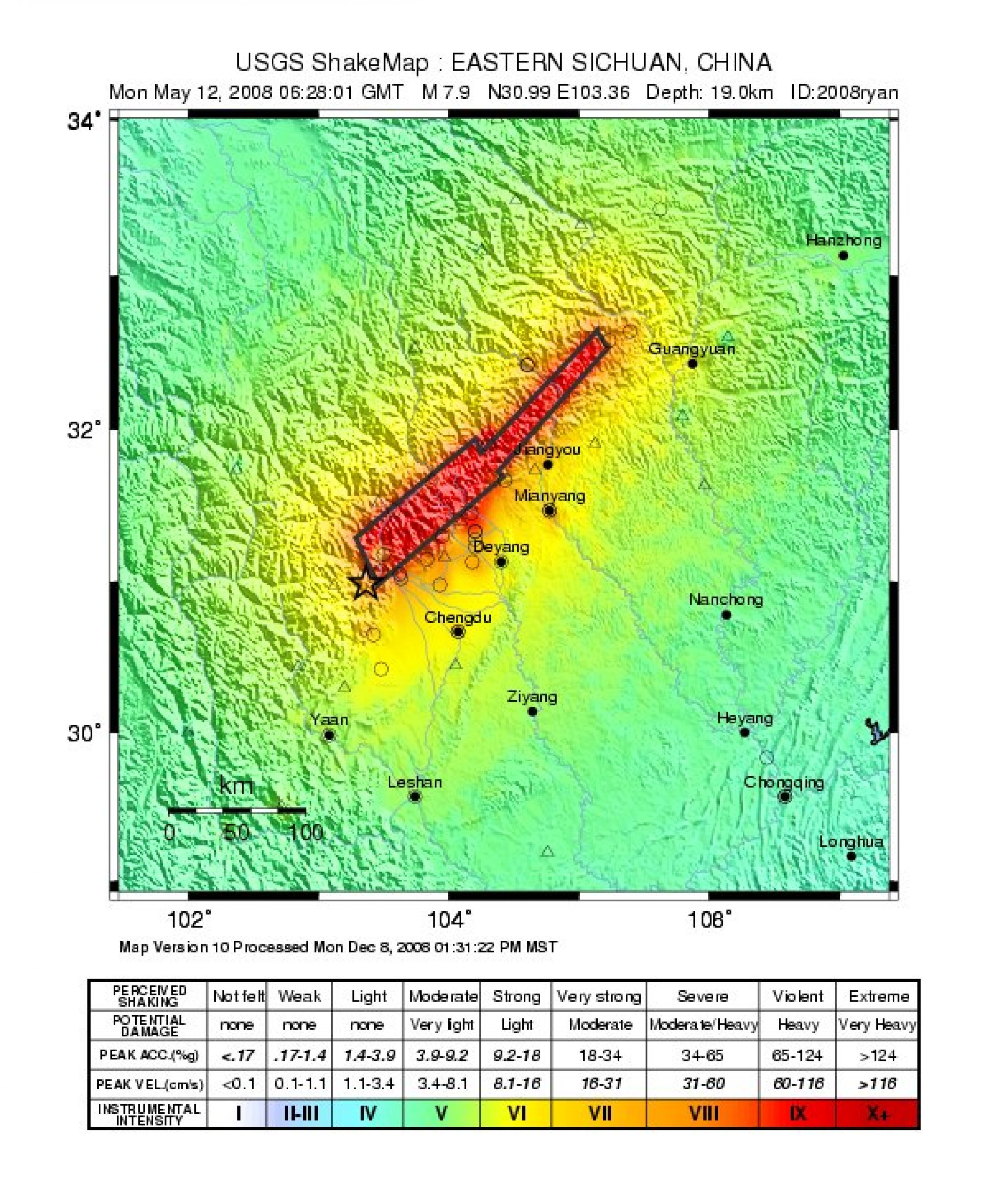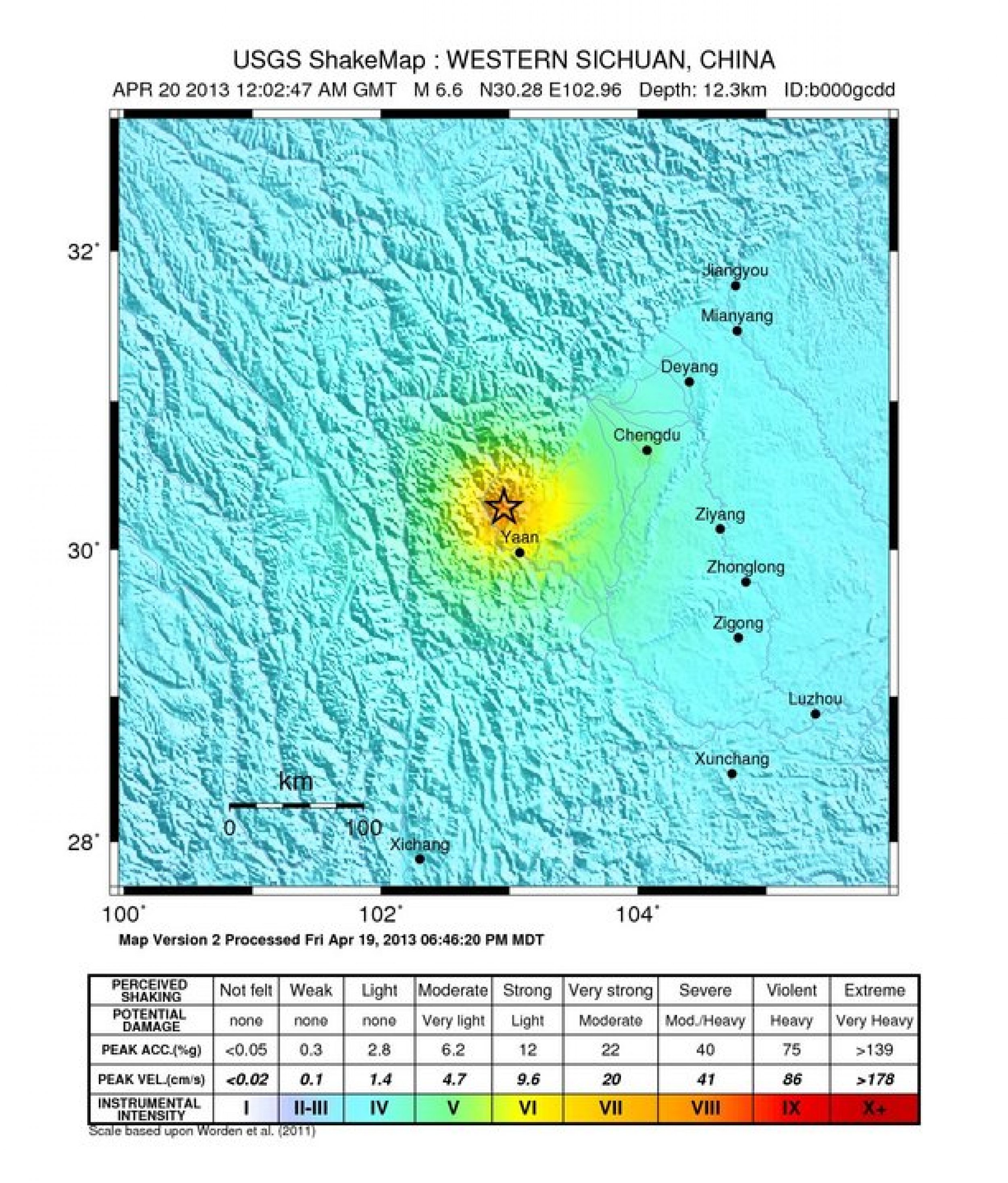China Earthquake Fifth-Largest Quake To Shake Sichuan In Past 90 Years: USGS [MAPS]
U.S. Geological Survey data indicate the China earthquake in Sichuan Saturday was the fifth-largest quake to pound the province since 1923.
Chinese state media reported 207 people are dead or missing and 11,500 are injured as results of the magnitude-6.6 temblor outside the city of Ya'an, according to BBC News.
Analysis of the USGS data by a layperson suggests the area around the Longmenshan fault is more seismically active in a significant way during the 21st century than it was during the 20th century. (These data exclude major earthquakes affecting Sichuan whose epicenters were outside the province, such as the magnitude-7.9 quake in Mindanao, Philippines, on Aug. 16, 1976.)
Below are the dates and magnitudes of the five largest Sichuan temblors during the past 90 years, based on the USGS data:
-- 1. May 12, 2008: M 7.9.
-- 2. Aug. 25, 1933: M 7.4.
-- 3. May 25, 1948: M 7.3.
-- 4. March 24, 1923: M 7.3.
-- 5. April 20, 2013: M 6.6.
Following this article are two USGS Sichuan earthquake ShakeMaps, the first based on the 2008 quake and the second based on the 2013 temblor. The maps show not only their epicentral proximities but also their relationships to the Longmenshan fault that runs along the base of the Longmen Mountains, appearing on the left, or west, sides of both maps.
The 2008 earthquake merits more than a passing mention because its effects on Sichuan were as great in magnitude as the quake itself.
In terms of people, the USGS description of its impacts is mind-boggling: "At least 69,195 people killed, 374,177 injured and 18,392 missing and presumed dead in the Chengdu-Lixian-Guangyuan area. More than 45.5 million people in 10 provinces and regions were affected. At least 15 million people were evacuated from their homes, and more than 5 million were left homeless."
In terms of property, the USGS description of its results is almost as mind-boggling: "An estimated 5.36 million buildings collapsed, and more than 21 million buildings were damaged in Sichuan and in parts of Chongqing, Gansu, Hubei, Shaanxi and Yunnan. The total economic loss was estimated at $86 billion."
Currently, aftershocks and insufficient relief supplies are hindering the rescue efforts in Sichuan, according to China's official Xinhua News Agency.
"Over 1,700 aftershocks have been monitored in Lushan as of 10 p.m., with the strongest measuring 5.4-magnitude, making the already ramshackle houses even more dangerous and the rescue efforts more life-threatening," Xinhua reported.
Meanwhile, relief supplies are being routed to the stricken areas as quickly as possible, but -- with more than 1.5 million people affected -- daunting is too pale a word to describe the logistics there.
Chinese President Xi Jinping has ordered all-out measures for the rescue effort, and Premier Li Keqiang is directing the relief work on site in the earthquake zone, Xinhua said.


© Copyright IBTimes 2025. All rights reserved.






















